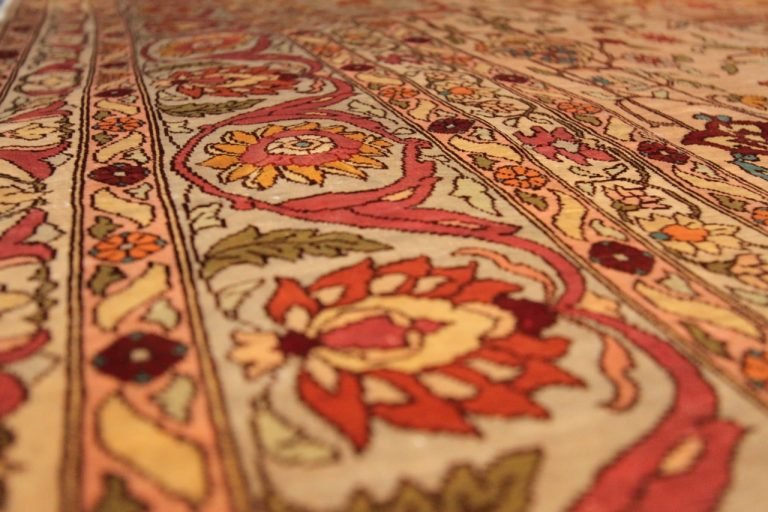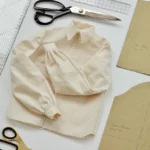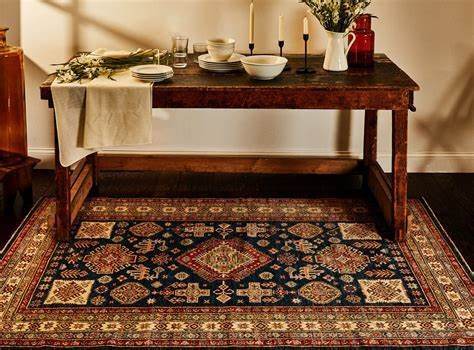Handmade rugs have been cherished for centuries for their beauty, craftsmanship, and cultural significance. These rugs not only serve as functional items but also as works of art that tell stories about their makers and their origins. Here’s a look into the history and significance of handmade rugs:
1. Origins of Handmade Rugs
Handmade rugs have their roots in ancient civilizations. The earliest examples date back to the nomadic tribes of Central Asia, where rugs were woven using traditional techniques. The Pazyryk rug, discovered in Siberia and dated to around 5th century BCE, is one of the oldest known examples. Its intricate designs and craftsmanship illustrate the high level of skill and artistry involved in early rug-making.
2. Traditional Techniques and Materials
Handmade rugs are crafted using various techniques, including knotting, weaving, and tufting. The choice of materials typically includes wool, silk, and cotton. Wool is prized for its durability and warmth, while silk adds a luxurious sheen. Cotton is often used for the foundation due to its strength.
Knotting is a popular method, particularly in Persian and Turkish rugs. This technique involves tying knots around vertical threads, creating intricate patterns. Weaving, used in Turkish and Persian rugs, involves interlacing threads to create complex designs.
3. Cultural Significance
Handmade rugs reflect the culture and traditions of their regions of origin. In Persia (modern-day Iran), rugs often feature motifs and patterns with deep symbolic meanings. For example, geometric designs and floral patterns may represent concepts such as eternity and paradise.
In Turkey, rugs are often adorned with symbolic motifs that reflect local folklore and beliefs. These designs are not merely decorative but carry historical and spiritual significance.
Indian rugs are known for their vibrant colors and intricate patterns, showcasing the rich artistic traditions of the region. Similarly, rugs from the Caucasus and Central Asia often feature tribal designs that tell stories about the nomadic cultures of these areas.
4. Craftsmanship and Artistry
The creation of handmade rugs is a labor-intensive process that involves skilled artisans. Each rug is meticulously crafted, with artisans often spending months on a single piece. The process begins with preparing the fibers, followed by dyeing them with natural or synthetic colors. Next comes the actual weaving, where artisans carefully follow patterns to create detailed designs.
Handmade rugs are celebrated for their quality and uniqueness, as each piece is crafted with individual care and attention. The imperfections found in handmade rugs add to their charm and authenticity, making them unique compared to mass-produced counterparts.
5. The Market and Modern Relevance
Handmade rugs have remained highly valued in the global market. They are often seen as investments due to their durability and the skill involved in their creation. Collectors and enthusiasts seek out these rugs for their aesthetic value and historical significance.
In recent years, there has been a growing appreciation for handmade rugs as sustainable alternatives to machine-made ones. The emphasis on craftsmanship and traditional techniques resonates with those who value artisanal quality and environmental responsibility.

6. Preservation and Care
To maintain the beauty and value of a handmade rug, proper care is essential. Regular cleaning, proper storage, and avoiding exposure to direct sunlight can help preserve the rug’s condition. Consulting with professionals for cleaning and restoration ensures that the rug remains in excellent shape.
Conclusion
Handmade rugs are more than just decorative items; they are a testament to centuries of tradition, artistry, and cultural expression. From their ancient origins to their contemporary significance, these rugs continue to captivate and inspire. Understanding their history and significance enriches our appreciation of these beautiful pieces and the craftsmanship behind them.











